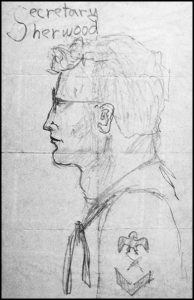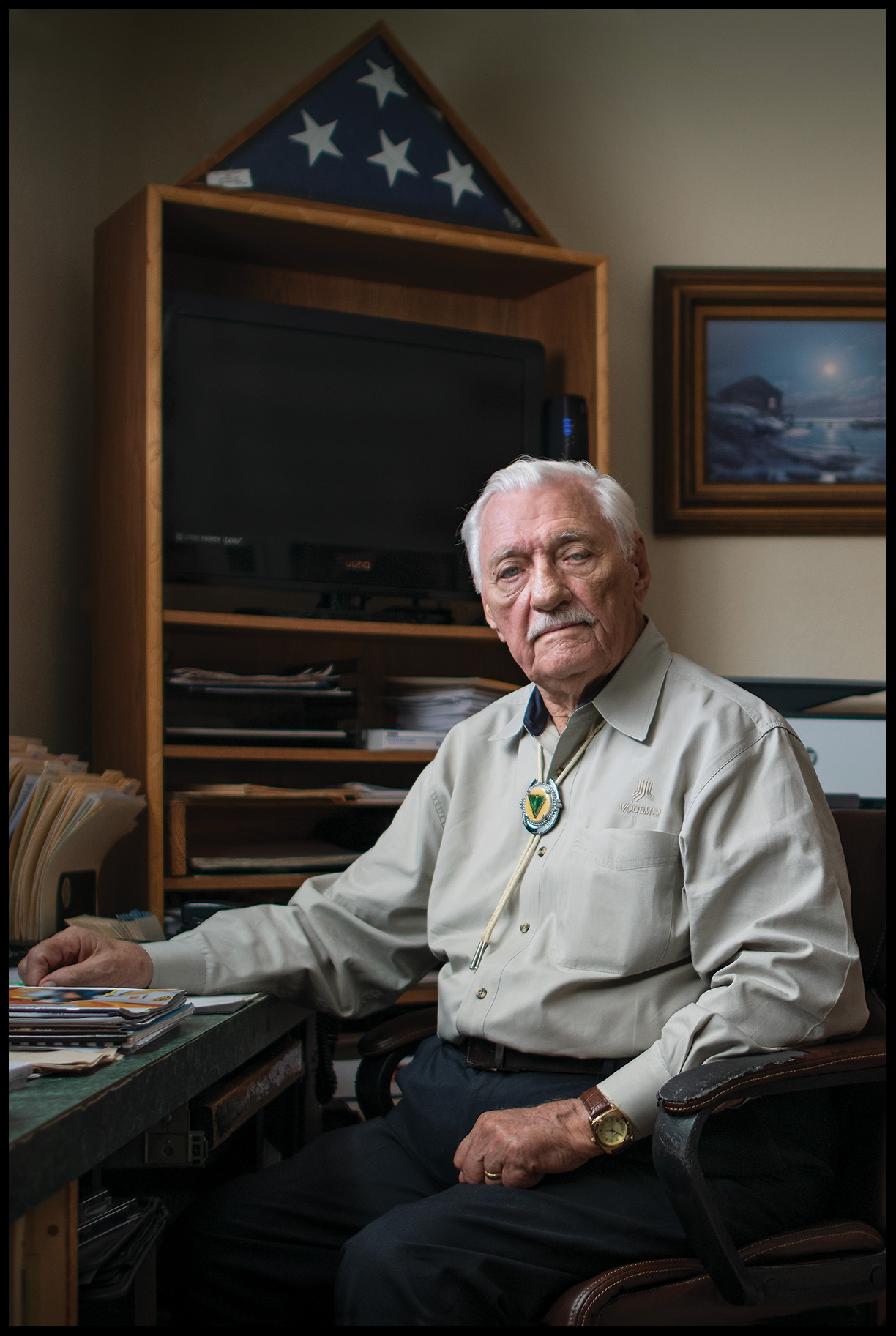Milton Sherwood
Worked in Hydrographic Office
Milton Sherwood
Seaman First Class, U.S. Navy
1943-1946

(S) 1/c Milton Sherwood,
Norfolk, VA, 1945
On being stationed at Norfolk: I put in a number of times for a transfer and finally my commanding officer said, ‘Look, when the Navy wants to put you aboard ship, they’ll put you aboard ship. Until then, you’re here.’
I was born in 1925 and raised in Norfolk, Virginia. My dad was a fireman in the Navy in WWI. When I finished high school, I went to school at Manassas, Virginia with NYA (National Youth Administration). That’s where kids could learn a trade, and I chose woodworking. Then I got a job at Langley Field as an apprentice for a model maker.
I went to a movie and they had a short about recruiting for the Merchant Marine. I went to the recruiting office in 1943 but didn’t have the right draft qualification. Before I could get that fixed, I was drafted. I said I wanted Navy and I got it. After boot camp I got my orders to transfer to Norfolk for further transfer. Unfortunately, that’s where I wound up being stationed. I put in a number of times for a transfer and finally my commanding officer said, ‘Look, when the Navy wants to put you aboard ship, they’ll put you aboard ship. Until then, you’re here.’
I spent most of my time in the hydrographic office under the port director. We handled aeronautical charts and publications. We corrected them and issued them to pilots and ships. An example of something that changed was if an airport added a runway. All the charts with that airport had to be corrected. We had airports from all over the world. We had a lot of things pertaining to Japan like airports and industries. Naval Intelligence would come to our office to go through those. Every time they did, we knew something was going on, but we didn’t really know what until it happened. Then we’d think back to what they were looking at. We all had to be qualified for handling secret material.
About a third of the Navy never did see a ship. You stop and think of all the men it took to operate the bases; they had to spread them out somehow. When the war ended, they moved our office to the Naval Air Station. I wound up in a crash boathouse until I was discharged. If a plane crashed in the bay or the ocean, we would have to go out. I went out several times, although I wasn’t required to. My job was as a yeoman in the office. I was discharged on
June 1, 1946 as a seaman first class. I enjoyed the Navy and was proud of my service. If I had it to do again, I would still select Navy.
I went back to my old job and stayed a little over a year. I still wanted sea duty, so I quit and went into the Merchant Marine. They were laying up ships, so ships were hard to get. The first ship I got was the James E. Haviland, a liberty ship going to Sweden. I came back and was on the beach for several months. Between ships you found jobs to do until you could get another ship. I was certified for both deck department and engine department. They needed seamen in Washington and Texas so I took the bus to Corpus Christi. I was there two weeks and took a tanker out. After I paid off of that tanker, I moved to Corpus. I was in the Merchant Marine off and on from 1947 to 1951.
The first job I was able to get in Corpus was as a carpenter’s helper building new homes. In 1951 I applied at Celanese Chemical and Plastics Company. They were a Swiss company that originally made celluloid. I worked for them for 35 years to the day and retired in 1986 when I was 63.
After I retired, I did a lot of volunteer work including the Navy-Marine Corps Relief Society, the convention visitor’s center in Kingsville, and the John Conner Museum at Texas A&M. I also served on two boards.
{11-01-2019 • Corpus Christi, TX}
